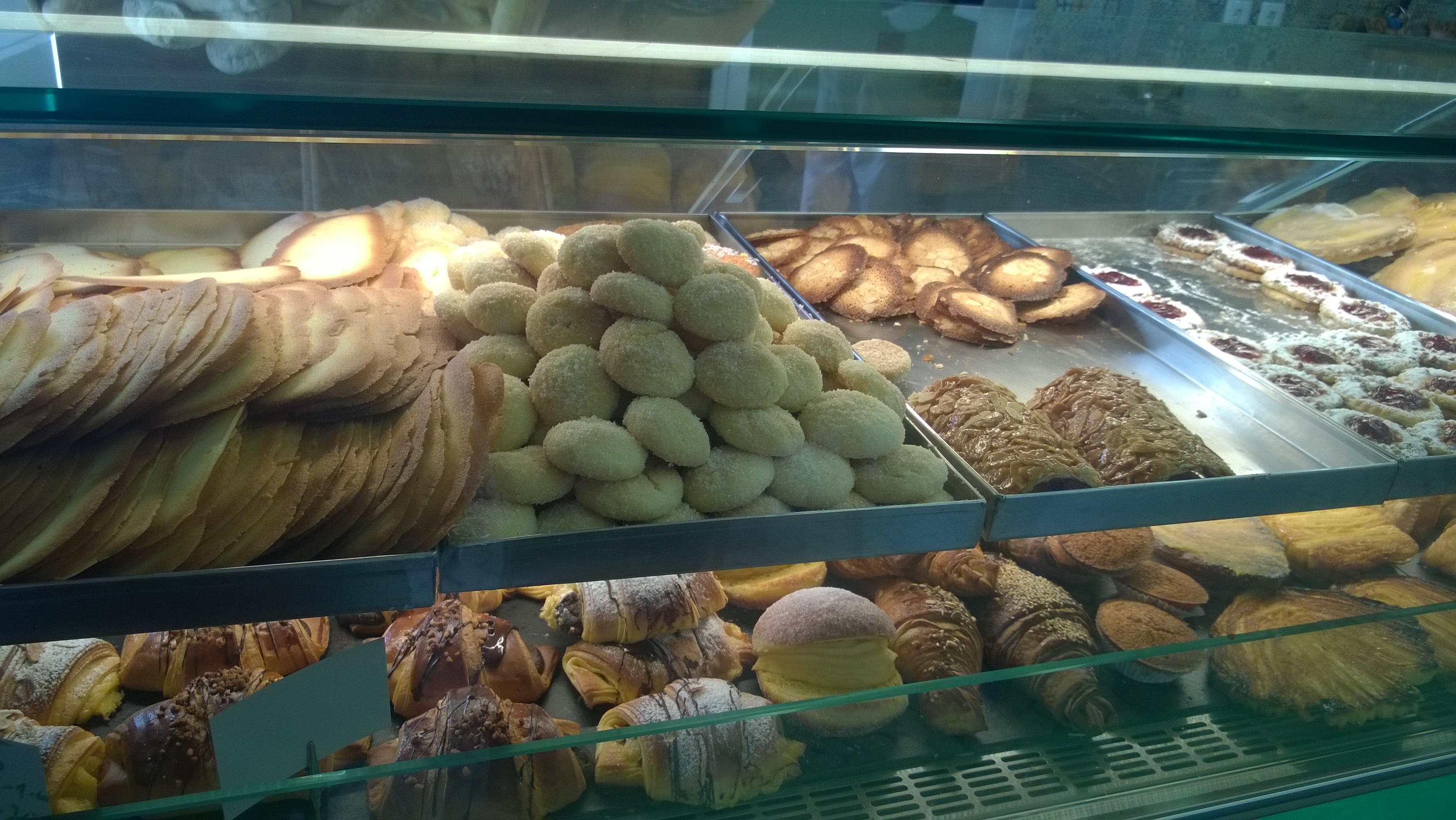I love visiting places and trying the local cuisines. A recent trip to Portugal was no exception. I was prepared for the sardines, the abundant fresh seafood, the black pig, and the ubiquitous Pastel de Nata, (custard tart). What I was surprised by, was the national love of pastries.
The Portuguese LOVE their pastries, especially sweet ones; any and every occasion is suitable for eating bolo – a general term which translates as ‘cake’. In the town where we stayed there were at least half a dozen pastelarias, and they were only the ones we discovered. In Lisbon there were pastry shops/cafés on most streets. The Portuguese eat bolo for breakfast, elevenses, mid-afternoon, and at any point in between. A bolo and an expresso seemed to form the basis of the national diet, and certainly the majority of breakfasts, if the bustling cafes first thing in the morning are anything to go by.
One of the bakeries we had the good fortune to holiday close to was Maria’s in Ericeira, the national Pastel de Nata champion 2017 and supplier of bread to many Ericeira shops. They also produced dozens of other pastries, both sweet and savoury, as well as the more ordinary, but equally delicious, bread products. Every Pastelaria seemed to offer a slightly different array of tasty treats, and both bakers and servers were suitably proud of their offerings. We didn’t have time to try them all, but we did embrace the café culture and chill with a coffee/tea/infusion and a pastry on numerous occasions – it would have been impolite not to!
There were lots of variations of Tarte de Amêndoa (almond tart) including tiny bite sized versions. Apparently there is a legend that tells how the almond trees came to grow in Portugal. It is said that an Arab prince, concerned that his wife, who was from a northern country, could become sad from missing the snow, ordered the planting of these trees so its blossoming could create the illusion of fields covered with snow. Whether true of not, almonds are certainly firmly on the pasty menu here.
I was surprised by the proliferation of Croissant, clearly adopted from the French classic, but quite different. The Portuguese croissant is similar in shape to the French one but the dough is completely different. Forget light, crispy and airy and think of something heavier, closer to brioche. It is also often made with a brown style flour and filled with custard.
We also tried Brigadeiro: the famous Brazilian pastry made with condensed milk, butter, cocoa powder and coated with chocolate sprinkles. You wouldn’t want too many.
Bola de Berlim (Berlin Ball) is one of the most popular pastries. Filled with an egg yolk based cream – very like crème pâtissière – fried and covered with sugar, it is similar to a mini-doughnut. Apparently it is often sold on beaches in the summer, although we were too late in the season to experience this particular delight.
There were a range of pastries called Clarinhas, which means pertaining to a ‘convent’. These kinds of pastries date back to the 15th century, when sugar became more widely available and entered the gastronomic tradition of the convents. Clarinhas contain the traditional pastry ingredients – butter, eggs, flour – but inside they are filled with chila, a jam made from a type of squash.
Another interesting and unexpected pastry in the line-up, created in Torres Vedras in the late 1800s, is Pastel de Feijão (Bean Tart) Another typical sweet Portuguese treat, it is made of a white bean puree contained within a flaky crust. It is commonly presented with powdered sugar sprinkled on top.
We would have needed to stay for several months to try the full range of pastries, both sweet and savoury, and I’m sure we’d have needed bigger airline seats coming home, to accommodate the additional pounds we would have gained. We will certainly be back to try some more Portuguese pastry delights. If you ever get the chance to visit Portugal, do make sure you try them.
